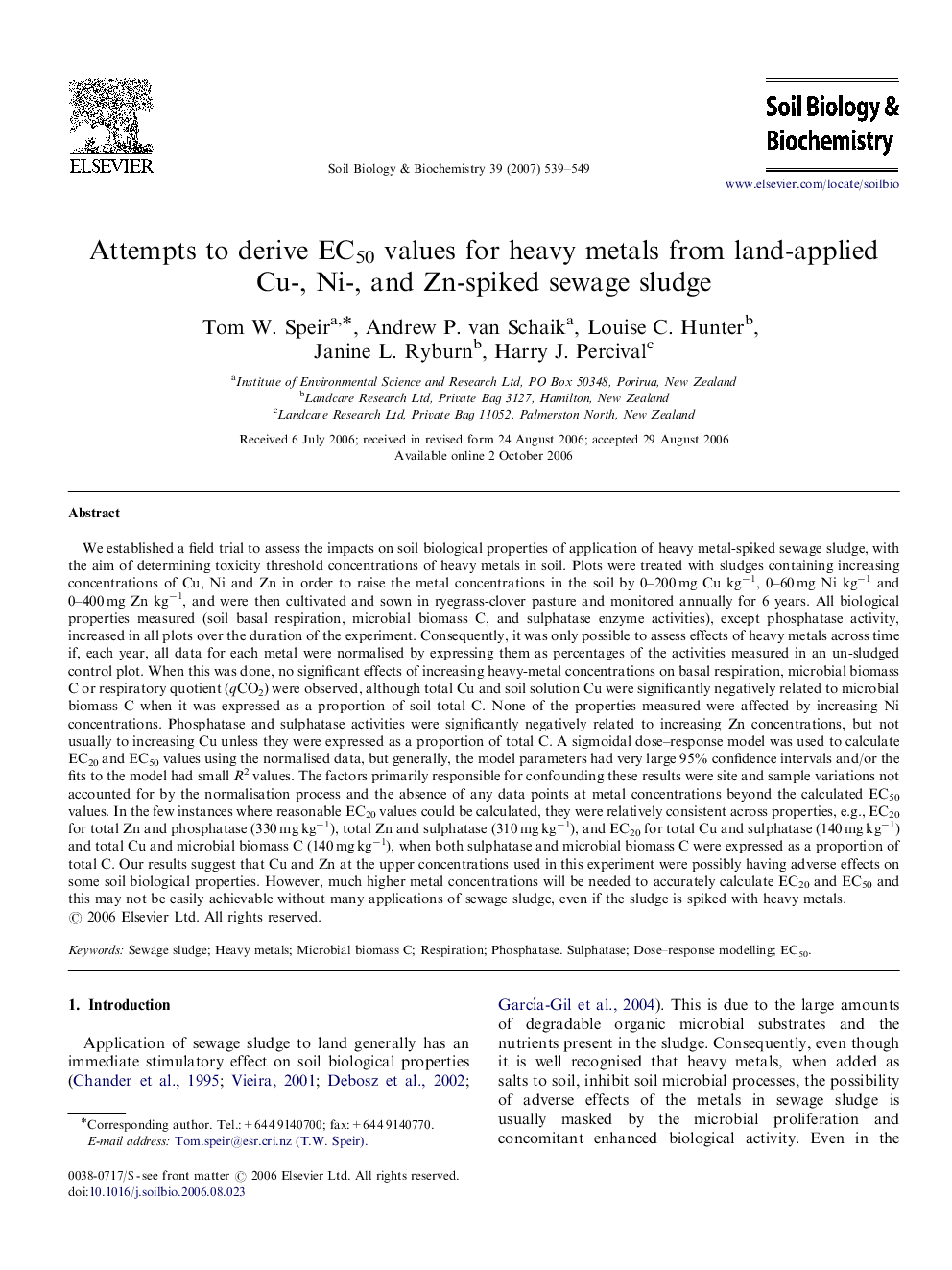| کد مقاله | کد نشریه | سال انتشار | مقاله انگلیسی | نسخه تمام متن |
|---|---|---|---|---|
| 2026473 | 1070031 | 2007 | 11 صفحه PDF | دانلود رایگان |

We established a field trial to assess the impacts on soil biological properties of application of heavy metal-spiked sewage sludge, with the aim of determining toxicity threshold concentrations of heavy metals in soil. Plots were treated with sludges containing increasing concentrations of Cu, Ni and Zn in order to raise the metal concentrations in the soil by 0–200 mg Cu kg−1, 0–60 mg Ni kg−1 and 0–400 mg Zn kg−1, and were then cultivated and sown in ryegrass-clover pasture and monitored annually for 6 years. All biological properties measured (soil basal respiration, microbial biomass C, and sulphatase enzyme activities), except phosphatase activity, increased in all plots over the duration of the experiment. Consequently, it was only possible to assess effects of heavy metals across time if, each year, all data for each metal were normalised by expressing them as percentages of the activities measured in an un-sludged control plot. When this was done, no significant effects of increasing heavy-metal concentrations on basal respiration, microbial biomass C or respiratory quotient (qCO2) were observed, although total Cu and soil solution Cu were significantly negatively related to microbial biomass C when it was expressed as a proportion of soil total C. None of the properties measured were affected by increasing Ni concentrations. Phosphatase and sulphatase activities were significantly negatively related to increasing Zn concentrations, but not usually to increasing Cu unless they were expressed as a proportion of total C. A sigmoidal dose–response model was used to calculate EC20 and EC50 values using the normalised data, but generally, the model parameters had very large 95% confidence intervals and/or the fits to the model had small R2 values. The factors primarily responsible for confounding these results were site and sample variations not accounted for by the normalisation process and the absence of any data points at metal concentrations beyond the calculated EC50 values. In the few instances where reasonable EC20 values could be calculated, they were relatively consistent across properties, e.g., EC20 for total Zn and phosphatase (330 mg kg−1), total Zn and sulphatase (310 mg kg−1), and EC20 for total Cu and sulphatase (140 mg kg−1) and total Cu and microbial biomass C (140 mg kg−1), when both sulphatase and microbial biomass C were expressed as a proportion of total C. Our results suggest that Cu and Zn at the upper concentrations used in this experiment were possibly having adverse effects on some soil biological properties. However, much higher metal concentrations will be needed to accurately calculate EC20 and EC50 and this may not be easily achievable without many applications of sewage sludge, even if the sludge is spiked with heavy metals.
Journal: Soil Biology and Biochemistry - Volume 39, Issue 2, February 2007, Pages 539–549